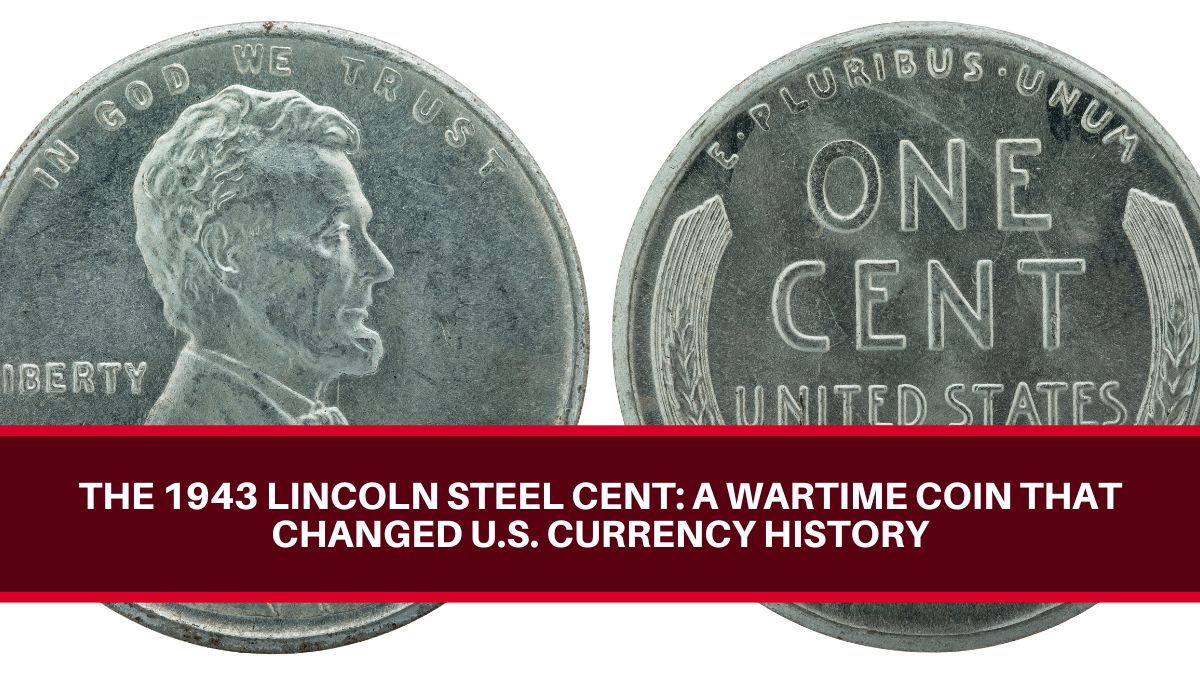The 1943 Lincoln Steel Cent is one of the most unique coins in American history. Made during World War II, this coin was created when the U.S. government replaced the copper used in pennies with steel. It stands out due to its shiny, silver-like appearance and is highly valued among collectors today. In this guide, we’ll explore the story behind the 1943 steel cent and its impact on history.
Why Was the 1943 Steel Cent Made?
During World War II, the United States needed copper for weapons and other war supplies. As a result, the U.S. Mint decided to use steel coated with zinc to make pennies in 1943. This change helped conserve important metals for the war effort.
Normally, pennies were made of bronze, which contains copper. However, the need to conserve copper led to this temporary shift. The steel cents look very different from regular pennies and have a shiny, silver appearance when new.
Experiments to Replace Copper
Before deciding to use steel, the U.S. Mint tried out many other materials. Between 1941 and 1942, they tested different metals and even worked with private companies like DuPont and Blue Ridge Glass Corporation. They created some experimental coins, but none worked well enough. Finally, the Mint decided on zinc-coated steel, which was the best short-term solution.
Key Specifications of the 1943 Lincoln Steel Cent
| Feature | Specification |
|---|---|
| Year of Issue | 1943 |
| Mintage | 684,628,670 |
| Alloy | Low-carbon steel coated with 0.005″ zinc |
| Weight | 2.7 g |
| Diameter | 19.0 mm |
| Edge | Plain |
| Designer | Victor D. Brenner |
How the Coin’s Appearance Changed
When first made, these steel cents had a bright, shiny white appearance. In fact, many people confused them with dimes because of their color. However, after being exposed to the environment, the coins started to lose their shiny look. Over time, they became dull, dark, or even rusty as the zinc layer wore off, revealing the steel underneath.
Collectors prefer the bright, uncirculated versions of the coin. Some sellers try to trick buyers by re-coating these coins to make them look new, but experienced collectors can usually spot the difference. Re-coated coins lack the original mint shine and often look like they’ve been painted.
Mistakes and Rare Coins
Not all 1943 pennies were made of steel. By mistake, a small number of copper pennies were also made that year. These rare copper pennies are highly valuable and can sell for huge sums of money. Similarly, in 1944, a few leftover steel planchets (the metal discs used to make coins) were mistakenly used, creating another rare type of penny.
Market Value of 1943 Steel Cents
Despite being produced in large numbers, the 1943 Lincoln Steel Cent is still popular among collectors. High-quality, uncirculated versions of the coin are especially valuable. These coins can sell for about $30 if graded by professional services like PCGS or NGC. In top condition (graded as MS67 or MS68), these coins have been sold for hundreds or even thousands of dollars at auctions.
Noteworthy Auction Prices
| Coin Type | Auction Price |
|---|---|
| PCGS MS68+ CAC, 2020 (Lot 9083) | $33,600 |
| PCGS MS68 CAC, 2024 (Lot 3907) | $4,560 |
| PCGS MS68 CAC, 2022 (Lot 3328) | $7,200 |
| PCGS MS68 CAC, 2021 (Lot 1224) | $4,080 |
Conclusion
The 1943 Lincoln Steel Cent is more than just a coin – it’s a piece of history. Created during one of the most challenging times in the 20th century, it tells the story of a nation’s effort to conserve resources for the war. With its unique appearance and historical significance, this one-year coin continues to fascinate collectors, making it a prized item in coin collections around the world.
FAQ’s
Why were 1943 pennies made of steel?
The U.S. Mint used steel for pennies in 1943 to save copper for the war effort during World War II. Copper was needed to make weapons and other essential supplies.
How much is a 1943 steel penny worth today?
A 1943 steel penny in average condition is worth around 30 cents to $1. However, uncirculated coins can sell for $30 or more, and rare versions like the copper pennies from 1943 can be worth thousands.
Why do some 1943 steel pennies look rusty or dark?
The zinc coating on 1943 steel pennies can wear off over time, exposing the steel underneath, which can rust or become discolored after years of exposure to air and moisture.

